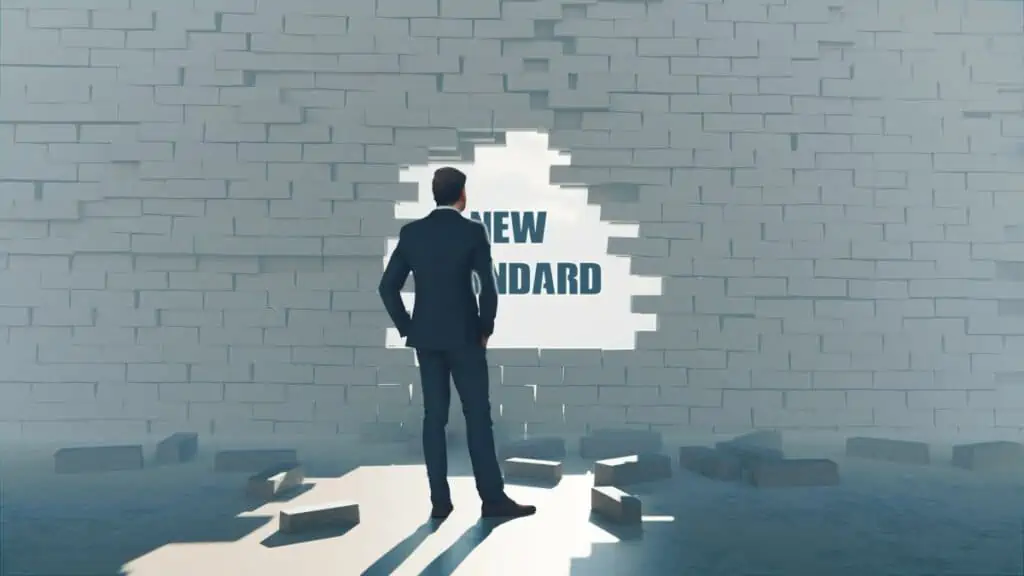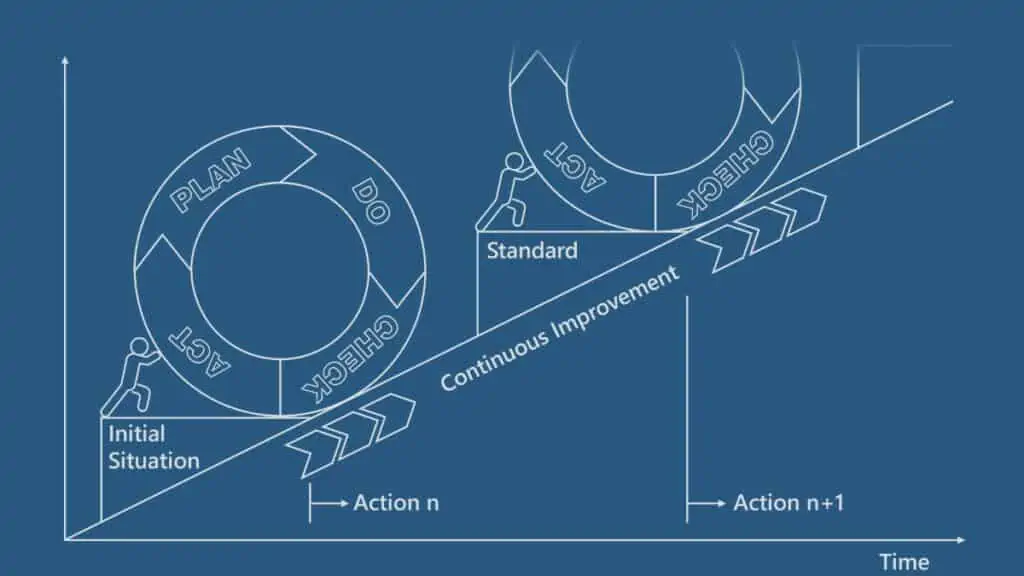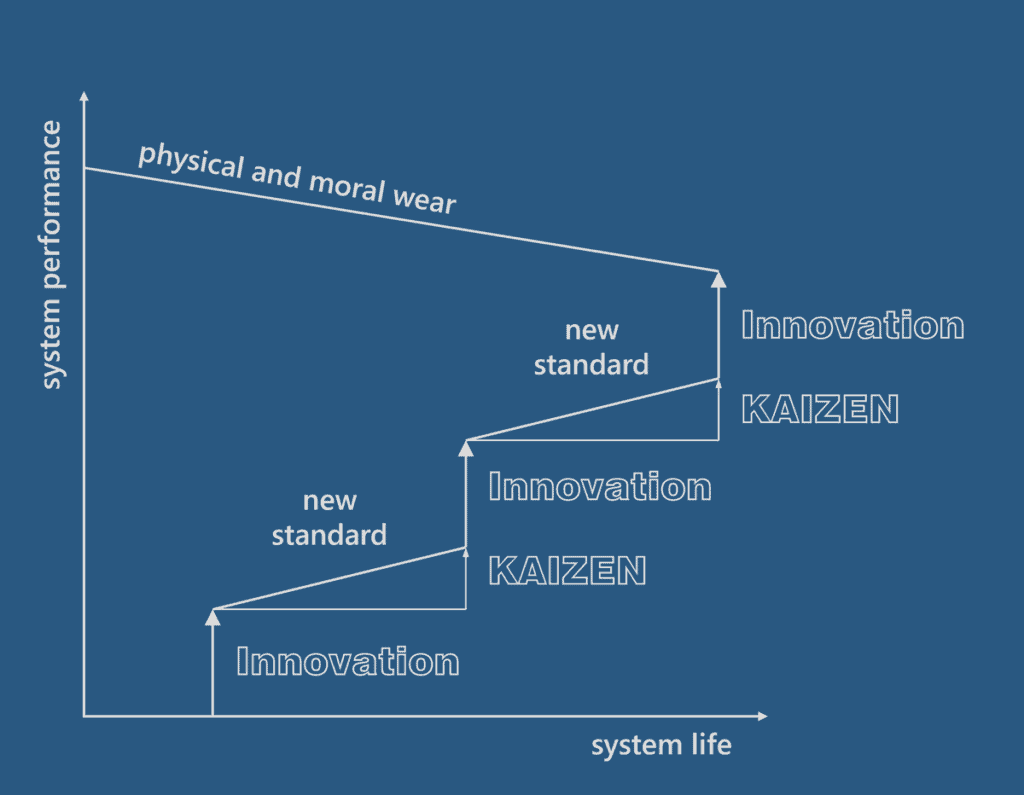To persevere in the endless fight for supremacy, it is not enough for companies to always stay on the same level, no matter how high that level might be. Only contenders who never stop improving can manage to not only hold themselves above water but even climb to the top of the economy’s hierarchy.
Unfortunately, this does not happen naturally as companies are, just like employees, change-resistant. That is why there are concepts specifically created for this purpose that organizations can apply in order to ensure continuous improvement. This is part of the Lean Management idea, which basically sums up all principles and methodologies for an efficiently designed product creation.

The base idea is known in the industry as the Continuous Improvement Process (CIP). It was first created by W. Edwards Deming, also known for the Deming Cycle; the most common methodology of continuous improvement. A different name for it is the PDCA Cycle, named after its four steps “Plan, Do, Check, Act” (PCDA). The system implies that this root clause should always be repeated again and again in a cycle to create continuous process improvement.
The PDCA Cycle explained
PDCA Cycle Step 1: Plan-Phase
PCDA is typically started in the Plan Phase where a plan of action is created. It defines what the result should look like and the best course of action to get there. This includes possible measures that could be taken, how much time and money is required to see it through and who will be involved. Most important, however, is to make sure you document thoroughly what the current stand is and freeze this so that no room for confusion is left at the end of the process as to what has actually changed.
PDCA Cycle Step 2: Do-Phase
Continuing with the Do-Phase, improvement measures are starting to be applied. Meanwhile, progress towards the previously set goals is being observed. It is also important to continuously check that all necessary resources are available and deadlines can be kept, or to adapt accordingly.
PDCA Cycle Step 3: Check-Phase
In the Check-Phase results are measured, upon which it is then decided whether all set goals following the defined success factors have been reached.
PDCA Cycle Step 4: Act-Phase
If the goals were reached it is then, in the final step called Act-Phase, decided if the newly developed procedures should be used as the standard moving forward. Then the fleshed-out concept will be handed over to the person responsible for the production system, who then decides how it is best implemented into the current system. Additionally, many companies then use a Best-practice-catalog that is made available to all employees and educates them about the new and improved workflows. If it turns out that goals have not been reached or improvements cannot be implemented sustainably and efficiently, then the problems that occurred are being analyzed and set as goals for the next cycle.
Typically, this main procedure isn’t seen through by the company as a whole, but by separate teams that are created either after organizational units or process steps and hosted by a moderator.

Also important to note is that if the initial standards aren’t documented sufficiently when starting to implement PDCA, then the whole process is first started with a thorough analysis of the current stand, followed by the cycle beginning in the Check-Phase instead of the Plan-Phase. Otherwise, there would be no way of knowing that an improvement has been reached and wasn’t already the standard at the start. Clear standards can also help with assuring that the goal isn’t just a general change instead of an innovation.
The Kaizen approach
Nowadays, when learning about the continuous improvement process, it’s almost impossible not to stumble upon the term Kaizen somewhere. Especially when you are serious about corporate development, it is of paramount importance to spend ample time learning about it. KAIZEN stands for KAI = change; and ZEN = for the better; which is why the term is often used synonymously with CPI, as the two principles are extremely similar and refer to continuous improvement.
Both are essentially about implementing continuous improvement, not through innovation, but through the steady optimization of that which already exists. This often leads to more substantial success in the long run than innovative changes could. It also implies that the focus isn’t directly on financial gain, but on the improvement of products and processes of the company, which naturally leads to financial gain long term.
The main difference between the Kaizen approach and continuous improvement is actually tied to cultural differences. That is because Kaizen is a lot more than a continuous improvement tool. It describes an overarching Japanese philosophy that has its place in work life but also in the private life of many Japanese people. Here small-scale changes are implemented step-by-step over a long time. It implies that people are at the forefront of the process and everyone gets involved in it, while it is common to hold onto customs and existing procedures.
This is technically also the basis of Continuous Process Improvement which is generally what you call the process in the west rather than in the east. But because of the following large cultural differences, it doesn’t always get implemented the same way. That’s because here the focus is typically more on drastic changes in which existing processes are completely scrapped and redesigned. Also, technologies and individual people are more in the foreground here instead of all people as a whole. And yet, despite it not always being utilized perfectly, Kaizen is still one of the standard methods used to support the continuous improvement process.
Kaizen doesn’t necessarily oppose innovative concepts either, as the concepts often work hand in hand. Kaizen is always utilized for as long as possible until existing standards cannot be improved any further. That’s when innovation comes into play, which is often associated with great financial costs but also brings drastic improvements in efficiency with it.
Change Management
Considering that the innovative process is not focused only on profits, but on the optimization of each step of every employee’s tasks, it is also those workers who profit directly from these improvements and not only by having a better workflow in the end. While the main analytical work of continuous improvement is done by separate teams, every employee in the company should still be educated about the innovative process and encouraged to propose ideas for improvements. Through that process, each employee can feel heard and the whole company profits from more motivated workers, as lean management leads to more productivity.
Following that, employees are also more likely to stay with the company, than if they were constantly frustrated by avoidable problems that never change. This saves lots of time and money in recruiting as well as onboarding new workers.
Through continuous analysis and ever-improving resource management, any waste in productivity is more and more reduced, which doesn’t only save money, but also makes the company more sustainable.
When companies improve themselves through the continuous improvement process, then that also means they are at the forefront of research and development. When the latest technologies are brought to use, it allows for maximized productivity and the ability to keep up with the competition with ease.
What shouldn’t be underestimated is the aspect of digitalization, which can be both implemented and improved well through the continuous improvement process. This way, the old analogue methodology is very much improved in speed by their digital alternatives.

Conclusion
In the end, it is important to add that while these are very much proven and tangible processes and methods, their actual implementation will still be different from company to company and every leadership team has to decide for themselves how their company should best use the continuous process improvement. Or, in other words, every firm first has to optimize the CIP for itself, before the CIP can optimize the firm. Either way, it can only be recommended to every company that wants to improve efficiency, implement the CIP and not miss out on the many benefits it holds.
No problem, simply subscribe to our Blog-News!



